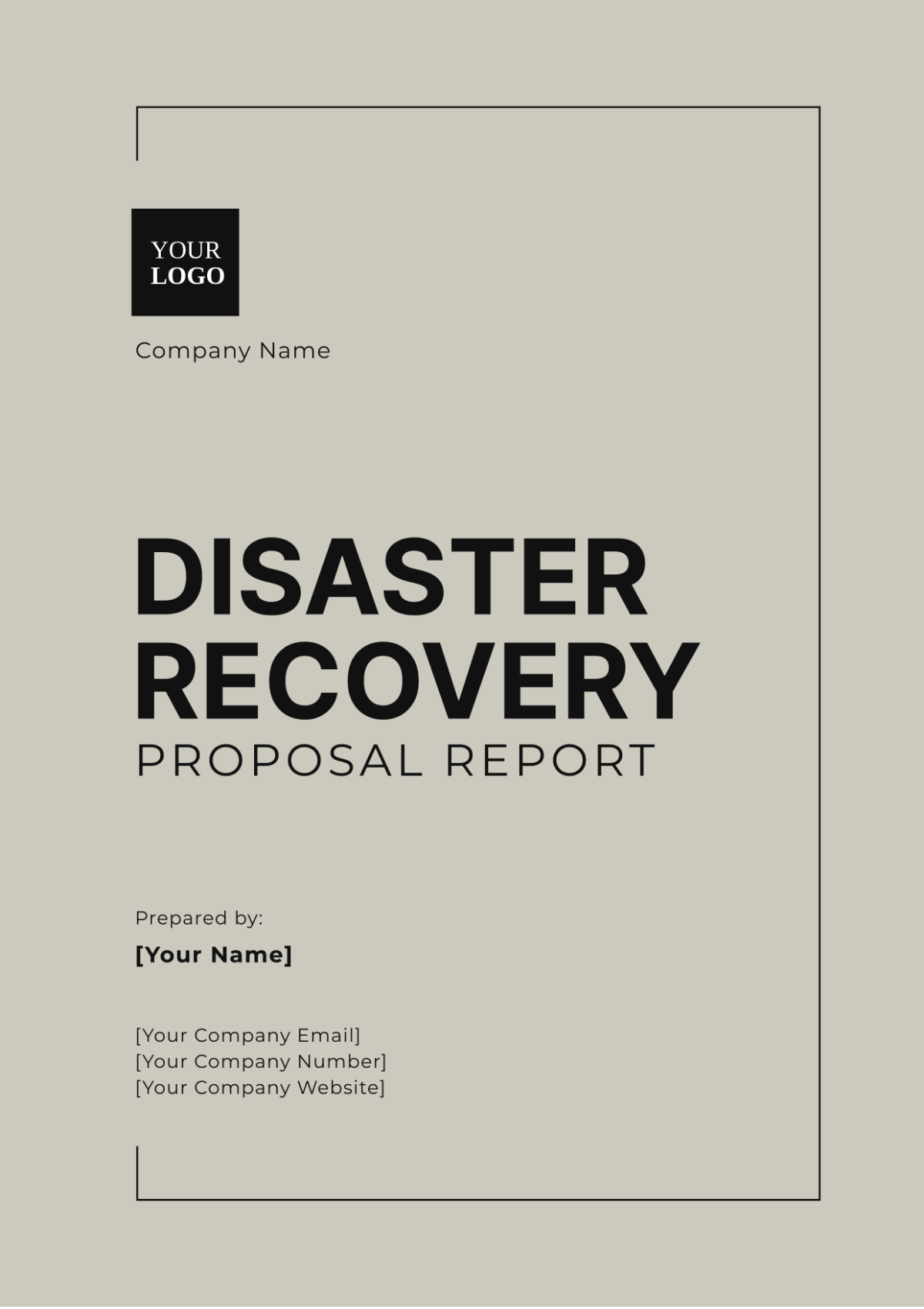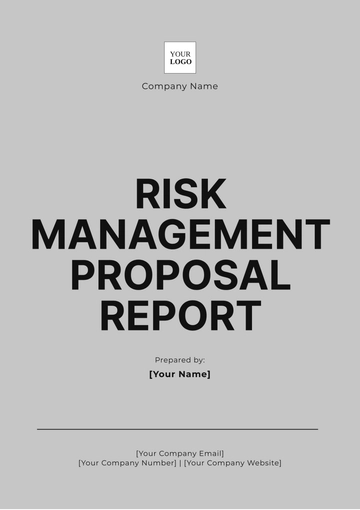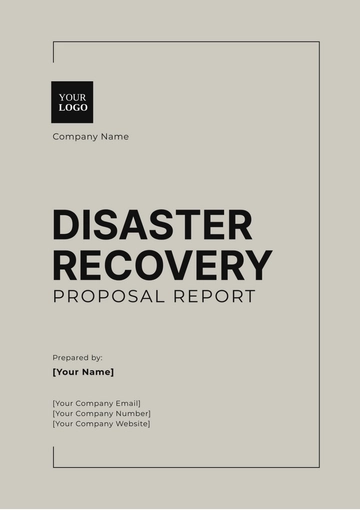Disaster Recovery Proposal Report
1. Executive Summary
The Disaster Recovery Proposal Report outlines a comprehensive strategy for recovering from various disasters that may impact [Your Company Name] operations. This report is designed to minimize disruption, restore normal business functions swiftly, and protect critical data and infrastructure. The proposed plan includes detailed steps for immediate response, short-term recovery, and long-term restoration, ensuring that [Your Company Name] can resume its operations with minimal downtime.
2. Introduction
In the modern business environment, the potential for disasters—whether natural, technological, or human-made—necessitates a robust disaster recovery strategy. This proposal delineates the steps required to prepare, respond, and recover from such events efficiently and effectively.
3. Risk Assessment and Analysis
3.1 Identified Risks
Key risks identified for this organization include:
Natural disasters (e.g., earthquakes, floods, hurricanes)
Technological failures (e.g., hardware malfunctions, software errors)
Human-made risks (e.g., cyberattacks, data breaches)
3.2 Risk Matrix
Risk | Likelihood | Impact |
|---|
Natural Disasters | Medium | High |
Technological Failures | High | Medium |
Human-made Risks | Medium | High |
4. Disaster Recovery Strategy
4.1 Preparation Phase
Key activities during the preparation phase include:
Risk assessment and analysis
Establishing a Disaster Recovery Team
Creating detailed recovery plans
Setting up offsite backups and redundant systems
4.2 Response Phase
The immediate response to a disaster includes:
Executing emergency protocols
Communicating with stakeholders
Initiating data recovery processes
4.3 Recovery Phase
Steps involved in the post-disaster recovery phase include:
Assessing damage and impact
Restoring systems and data from backups
Conducting a post-mortem analysis of the disaster
4.4 Disaster Recovery Team
The Disaster Recovery Team will be responsible for coordinating recovery efforts. The team includes the following roles:
Role | Responsibilities |
|---|
Disaster Recovery Manager | Oversees the entire recovery process and liaises with top management |
IT Specialist | Responsible for technical recovery aspects including data restoration |
Communications Officer | Handles internal and external communications during a disaster |
5. Business Impact Analysis (BIA)
5.1 Critical Business Functions
The analysis identifies critical business functions that need to be prioritized during the recovery process:
5.2 Recovery Time Objectives (RTO) and Recovery Point Objectives (RPO)
Business Function | RTO | RPO |
|---|
Customer Service Operations | 4 hours | 1 hour |
Financial Transaction Processing | 2 hours | 30 minutes |
IT and Computer Services | 1 hour | 15 minutes |
6. Communication Plan
An effective communication plan is essential for informing stakeholders and coordinating actions during a disaster.
6.1 Internal Communication
Key points include:
6.2 External Communication
This involves:
Informing customers and clients
Updating partners and suppliers
Media communication, if necessary
7. Testing and Maintenance
7.1 Regular Testing
To ensure the disaster recovery plan remains effective, regular testing is crucial. This includes:
Annual full-scale simulations
Quarterly tabletop exercises
Monthly data backup checks
7.2 Plan Maintenance
Continuous maintenance ensures the plan stays current and effective. This involves:
Reviewing and updating the plan semi-annually
Incorporating feedback from tests and real incidents
Training new team members
8. Conclusion
This Disaster Recovery Proposal Report provides a comprehensive strategy for preparing, responding, and recovering from disasters that may affect the organization. By implementing this plan, the organization ensures business continuity, minimizes downtime, and protects data integrity, thereby mitigating the impact of potential disasters.
Report Templates @ Template.net






























